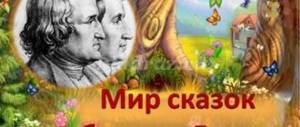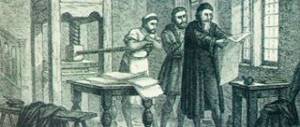Hans Christian Andersen presentation for a reading lesson (grade 2) on the topic
Slide 1
The presentation was prepared by a primary school teacher at boarding school No. 28 Leskova Tatyana Nikolaevna
Slide 2
Hans Christian Andersen 04/02/1805 – 08/04/1875
Slide 3
Hans Christian Andersen wrote 156 fairy tales. It is absolutely impossible to believe that an ordinary person could create such beautiful stories. Yes, Ole-Lukoje could have composed all these fairy tales, but a simple person could not. A person cannot know what a darning needle is thinking about, he cannot hear what a rosebush and a family of gray sparrows are talking about, he cannot see what color the dress of the elf princess, who has been called Thumbelina for some time now...
Slide 4
And if you think that Andersen’s fairy tales were born on velvet pillows, between lace cuffs and golden candlesticks, then you are deeply mistaken... “A sweet, kind, eccentric person,” that’s what contemporaries said about the famous Danish storyteller. Andersen's life was full of hardships and disappointments, but he never lost faith in people, in goodness and beauty. He taught this to his readers too.
Slide 5
In Denmark there is a small island of Funen, and on it the city of Odense. Here in 1805 the future famous storyteller was born. The boy was named Hans Christian, and his father, a shoemaker, was also named Hans Christian. There are different types of shoemakers - poor and rich. Andersen's father was poor. He didn’t want to be a shoemaker at all, he dreamed of studying and traveling. And since neither one nor the other succeeded, he read fairy tales to his son and took him for a walk in the vicinity of the city of Odense. He went with his son to the theater, which was in their small town.
Slide 6
At the age of fourteen, Andersen left his home and went to Copenhagen to seek his fortune on the stage, but persistent attempts to become an actor, dancer, and singer did not lead to success. Andersen did not lose heart and decided to write plays. By the way, he was almost illiterate; he had to go to school. At the age of 17, he sat down at a school desk with second-graders, and at 22, he became a university student.
Slide 7
In the houses of his friends, Andersen always told fairy tales to children, composing them as he went. As soon as he entered a house where there were children, they immediately demanded a new fairy tale. And the fairy tale never kept itself waiting. Her heroes were a blue dragon painted on a Chinese vase, a sparrow flying outside the window, and an old glove.
Slide 8
Since childhood, Andersen knew how to cut out all sorts of shapes from paper. And when a piece of paper turned into an old witch on a broom, an elegant ballerina, a stork standing on one leg in a nest, fairy tales about these figures were immediately born.
Slide 9
At the age of 30, still poor and almost unknown, Andersen wrote on a piece of paper: “A soldier was walking along the road: one-two! one-two! A satchel on his back, a saber on his side, he was walking home from the war...” This is how the story about the brave former soldier appeared. Important gentlemen looked at him as if he were nothing, because he didn’t have a penny. But the old flint helped the brave soldier become king. It was the fairy tale "Flint". And this was the beginning of a new life.
Slide 10
And if the writer’s everyday life turned into a magical world, then the magical kingdom turned into a living, understandable world. The problems that the heroes of fairy tales solved were not at all fabulous or small. Love and fidelity are revealed in the fairy tales "The Shepherdess and the Chimney Sweep", "The Snow Queen", "The Steadfast Tin Soldier", greed is condemned in the fairy tales "The Piggy Bank", "Little Claus and Big Claus", stupidity and arrogance - in the fairy tales "The Ugly Duckling" ", "The Princess and the Pea", "The King's New Dress"
Slide 11
Andersen's fairy tales quickly spread around the world and were translated into different languages. They appeared in Russia in the middle of the 19th century. “I am very glad that my works are read in the great, mighty Russia, whose flourishing literature I partly know, starting with Karamzin and Pushkin and right up to modern times.” Andersen wrote in 1868 Andersen became world famous. In all European capitals they were ready to endlessly receive and honor the “great storyteller.” The most famous people of that time became Andersen's friends, and even kings considered it an honor to shake his hand.
Slide 12
Hans Christian Andersen died at the home of friends and was buried in a cemetery in Copenhagen. On the day of his death, national mourning was declared in Denmark.
Slide 13
In 1965, the H.H. Andersen Prize was organized - a literary prize awarded to the best children's writers and illustrators. It is awarded once every two years. The prize is awarded on April 2, the birthday of Hans Christian Andersen. Many Russians - writers, illustrators, translators - were awarded Honorary Diplomas. The prize was awarded to a representative of the USSR only once - in 1976, the medal was awarded to Tatyana Alekseevna Mavrina, an illustrator of a children's book.
Hans Christian Andersen. presentation for a literature lesson (grade 5) on the topic
Slide 1
Hans Christian Andersen
Slide 2
16.04.17 02.04.1805 – 04.08.1875
Slide 3
04/16/17 Hans Christian Andersen wrote 156 fairy tales. It is absolutely impossible to believe that an ordinary person could create such beautiful stories. Yes, Ole-Lukoje could have composed all these fairy tales, but a simple person could not. A person cannot know what a darning needle is thinking about, he cannot hear what a rosebush and a family of gray sparrows are talking about, he cannot see what color the dress of the elf princess, who has been called Thumbelina for some time now...
Slide 4
04/16/17 And if you think that Andersen’s fairy tales were born on velvet pillows, between lace cuffs and golden candlesticks, then you are deeply mistaken... “A sweet, kind, eccentric person,” that’s what contemporaries said about the famous Danish storyteller. Andersen's life was full of hardships and disappointments, but he never lost faith in people, in goodness and beauty. He taught this to his readers too.
Slide 5
04/16/17 In Denmark there is a small island of Funen, and on it the city of Odense. Here in 1805 the future famous storyteller was born. The boy was named Hans Christian, and his father, a shoemaker, was also named Hans Christian. There are different types of shoemakers - poor and rich. Andersen's father was poor. He didn’t want to be a shoemaker at all, he dreamed of studying and traveling. And since neither one nor the other succeeded, he read fairy tales to his son and took him for a walk in the vicinity of the city of Odense. He went with his son to the theater, which was in their small town.
Slide 6
04/16/17 At the age of fourteen, Andersen left his home and went to Copenhagen to seek his fortune on the stage, but persistent attempts to become an actor, dancer, and singer did not lead to success. Andersen did not lose heart and decided to write plays. By the way, he was almost illiterate; he had to go to school. At the age of 17, he sat down at a school desk with second-graders, and at 22, he became a university student.
Slide 7
04/16/17 In the houses of his friends, Andersen always told children fairy tales, making them up as he went. As soon as he entered a house where there were children, they immediately demanded a new fairy tale. And the fairy tale never kept itself waiting. Her heroes were a blue dragon painted on a Chinese vase, a sparrow flying outside the window, and an old glove.
Slide 8
04/16/17 Since childhood, Andersen has been able to cut out all sorts of shapes from paper. And when a piece of paper turned into an old witch on a broom, an elegant ballerina, a stork standing on one leg in a nest, fairy tales about these figures were immediately born.
Slide 9
04/16/17 At the age of 30, still poor and almost unknown, Andersen wrote on a piece of paper: “A soldier was walking along the road: one-two! one-two! A satchel on his back, a saber on his side, he was walking home from the war...” This is how the story about the brave former soldier appeared. Important gentlemen looked at him as if he were nothing, because he didn’t have a penny. But the old flint helped the brave soldier become king. It was the fairy tale "Flint". And this was the beginning of a new life.
Slide 10
04/16/17 And if the writer’s everyday life turned into a magical world, then the magical kingdom turned into a living, understandable world. The problems that the heroes of fairy tales solved were not at all fabulous or small. Love and fidelity are revealed in the fairy tales "The Shepherdess and the Chimney Sweep", "The Snow Queen", "The Steadfast Tin Soldier", greed is condemned in the fairy tales "The Piggy Bank", "Little Claus and Big Claus", stupidity and arrogance - in the fairy tales "The Ugly Duckling" ", "The Princess and the Pea", "The King's New Dress"
Slide 11
04/16/17 Andersen's fairy tales quickly spread around the world and were translated into different languages. They appeared in Russia in the middle of the 19th century. In 1965, the H.H. Andersen Prize was organized - a literary prize awarded to the best children's writers and illustrators. It is awarded once every two years. The prize is awarded on April 2, the birthday of Hans Christian Andersen.
Slide 12
Andersen became world famous. 04/16/17 In all European capitals they were ready to endlessly receive and honor the “great storyteller.” The most famous people of that time became Andersen's friends, and even kings considered it an honor to shake his hand.
Slide 13
04/16/17 Zakharova Lyudmila Ivanovna, teacher of Russian language and literature, Klyuchevskaya Secondary School named after. A.P. Biryukova" Kurgan region, Shadrinsky district, 2011.
Slide 14
04/16/17 https://images.yandex.ru/yandsearch?text https://ru.wikipedia.org/wiki SOURCES: https://www.peoples.ru/art/literature/prose/fairytale/andersen/



